Physical Address
304 North Cardinal St.
Dorchester Center, MA 02124
Physical Address
304 North Cardinal St.
Dorchester Center, MA 02124

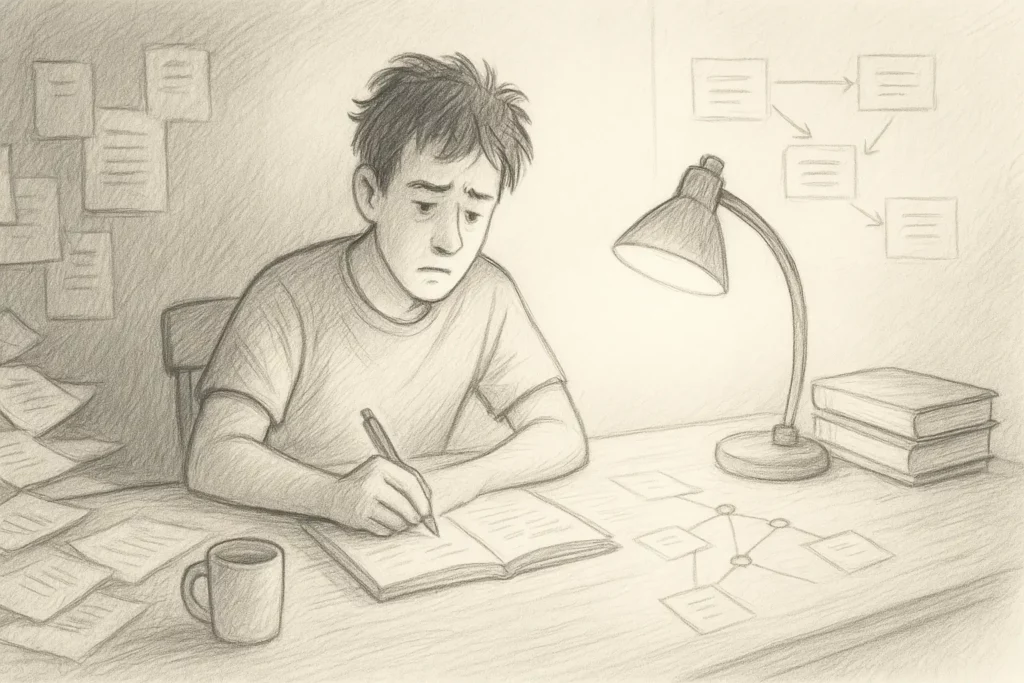
My actual brain is doing its best. But between studying, night shifts, and life’s general chaos, it occasionally forgets what I had for breakfast. So, I built a second one, a digital one, that never forgets. I use Obsidian as my second brain, and it’s the most useful thing I’ve ever done for my sanity and my studies. If you’re curious to learn more about personal knowledge management (PKM), you’ll find a wealth of resources on Tiago Forte’s website and in his books. For everything related specifically to Obsidian, I highly recommend checking out Nick Milo’s YouTube channel, where he shares practical and inspiring insights about building and refining a second brain.

A second brain is a system that stores, organises, and connects your thoughts, notes, and ideas outside your head. Think of it as a reliable assistant who keeps track of everything, from lecture notes and book quotes to random ideas that pop up while you’re half asleep. The goal is simple: to make information easy to capture, find, and use again. This concept, known as personal knowledge management (PKM), helps you stop hoarding data and start building actual understanding. Instead of your mind juggling dozens of tabs, a second brain for studying creates mental breathing space, freeing your attention for deep learning and creative thinking.
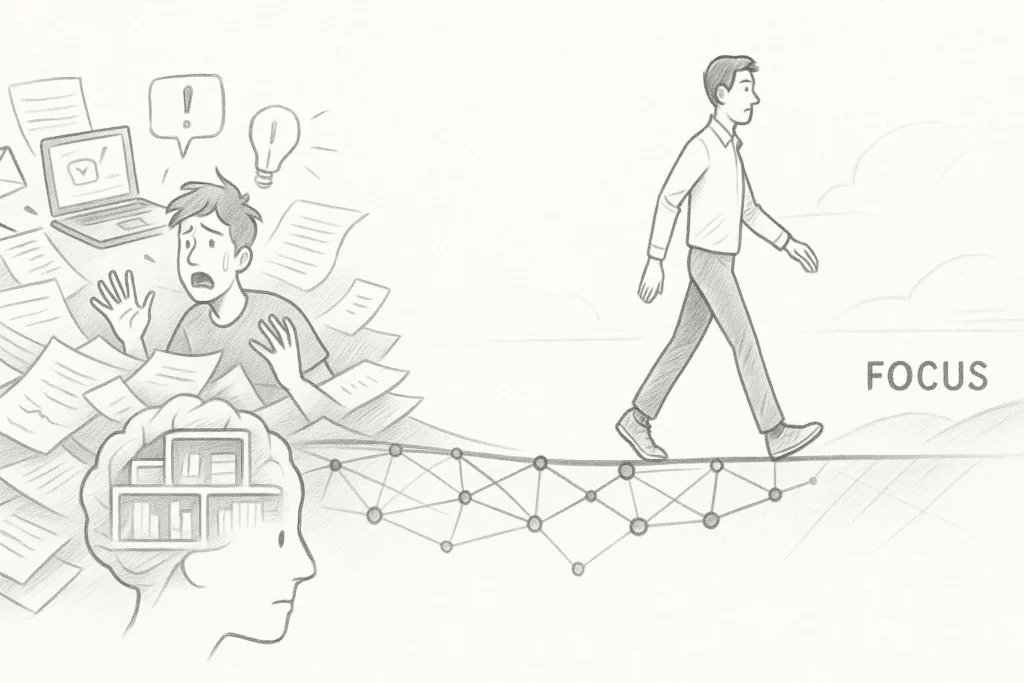
Because your brain is not a filing cabinet. It’s more like a browser with too many tabs open and music you can’t locate. Between studying, work, and life, your mind constantly switches contexts. A second brain captures the overflow so you rely less on short-term memory and work with long-term clarity. When I built mine, studying became less about memorising facts and more about connecting ideas. I began seeing patterns in my notes and recalling concepts faster. It made me a better student and helped me feel more grounded and confident in what I was learning. If you’re balancing education, work, and family (or studying after 40), a second brain helps you work with your limits instead of against them and builds resilience that prevents burnout and information overload.

Building a second brain for studying isn’t about collecting digital toys. It’s about shaping habits that make information management feel natural instead of forced. These principles are the quiet architecture behind my setup. They keep it simple enough to use daily and flexible enough to grow with me. Over time, I learned that simplicity and repetition beat motivation every time. A good system it’s one you trust when you’re tired and unfocused.
Every principle below was born from mistakes, small victories, and many nights of reorganizing chaos into calm. When you understand why each rule matters, you stop chasing perfect setups and start building one that actually supports your thinking.
If your study system looks like an air traffic control panel, it’s too complex to sustain. My first attempt involved twenty tags and a ritual involving coffee and despair. Then I simplified. Now I follow one rule: if it takes more than a few clicks to find something, it’s too complicated. A second brain should serve you, not impress anyone else. Complexity kills consistency. Start with something you can actually maintain on a tired Tuesday night.
Daily notes are the backbone of my second brain method. Each day, I jot down what I’ve learned or noticed, starting every new note from that daily entry so everything stays linked. I also use a dataview query to track new notes. I learned this from the YouTube channel Construct by Dee, which offers great videos about Obsidian and note organization. This simple habit grows naturally over time. Small entries turn into structured knowledge as you start seeing how a podcast connects to a research paper or how an idea from class links to your own experiences.
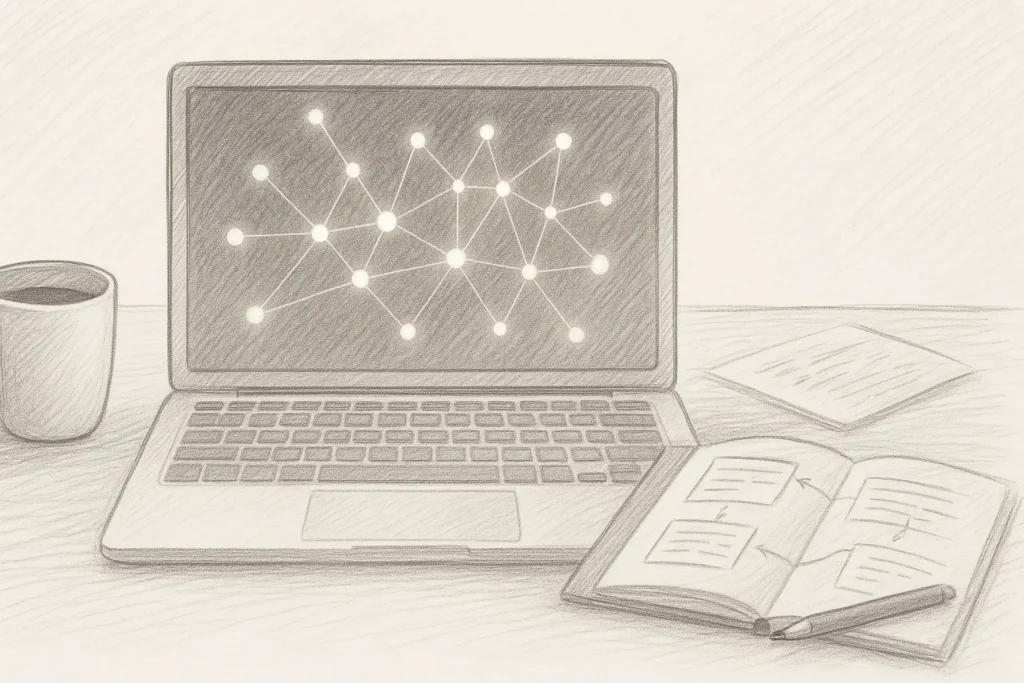
I use Obsidian because it fits how my brain works. But the real secret is not the app itself, it’s how I use it. Obsidian has just four main folders: Inbox, Notes, Templates, and Attachments. That’s it. Tags do the heavy lifting, connecting ideas I didn’t even know were related.
For capturing quick thoughts, I use my phone or a small notepad. During lectures or readings, I take short, incomplete notes. The goal is to grab ideas before they vanish. Later, I sit down at my laptop and connect everything. I use the Dataview plugin to track what I’ve added and Bases to create MOCs (Maps of Content). It’s a process that slowly turns random thoughts into structured knowledge.
If you love systems, resist the temptation to over-engineer this. You don’t need twenty folders or a fancy dashboard. You just need a clear place for your thoughts to land.
Whenever I find something interesting, a study, a quote, a random shower thought, I capture it immediately. I use my phone for quick notes, my laptop for deeper ones. The rule is simple: capture first, organize later. This prevents idea loss and keeps momentum. Everything goes into an “Inbox” folder in Obsidian. Once a day, I sort it. That’s it. I also used my second brain for lecture notes. During classes, I wrote directly into Obsidian or quickly captured short summaries to expand later. After each lecture, I reviewed those notes, added key points I had missed, and linked them to related topics. This helped me turn raw information into clear understanding without letting it pile up.
Organisation should be intuitive. My vault has just a few main folders: Inbox, Notes, Templates, and Attachments. Tags act as shortcuts to connect related ideas, and I’m a big fan of them because they help me find patterns between thoughts I didn’t even know were connected. I also use Obsidian Bases to create MOCs (Maps of Content) for each subject, which helps me keep an overview of core topics and link related materials in one place.
Before settling on Obsidian, I tried several other tools that promised to organize my chaotic study notes and creative ideas. Each had its own strengths and frustrations. Some looked beautiful but didn’t match how my brain actually works. Others were messy but surprisingly effective. Here’s how they compare, from sleek productivity platforms to the simple apps that quietly get the job done.
| Tool | Best for | Pros | Cons |
| Notion | Visual planners & collaborators | Clean interface, rich templates, easy sharing | Less flexible for deep idea linking |
| Roam Research | Heavy thinkers & writers | Automatic backlinks, fluid connections, powerful graph view | Subscription-based, browser-only |
| Apple Notes | Quick idea capture | Simple, fast, already installed on all devices | Limited tagging and linking options |
| Evernote | Long-time note collectors | Excellent web clipper, solid search, stable syncing | Bloated interface, slow performance |
Processing means revisiting captured notes and distilling their essence. I rewrite complex ideas in my own words to turn passive reading into active learning. It’s like turning scattered seashells into a finished necklace. When I summarized my lecture notes, I reviewed each one while the material was fresh, adding examples and linking to other classes. These short reviews became one of the most effective ways to reinforce learning and prepare for exams. The process took time but paid off in clarity and retention. Before finishing, I always ask: “Would Future Me understand this?” If not, I rewrite it.
Memory needs exercise. I use spaced repetition (reviewing information at increasing intervals) and active recall (testing what I remember without looking). Tools like Anki or Obsidian’s spaced repetition plugin automate this beautifully. That’s how I make learning stay with me, not just for exams but as something that naturally shapes how I think, notice connections, and make sense of the world around me.
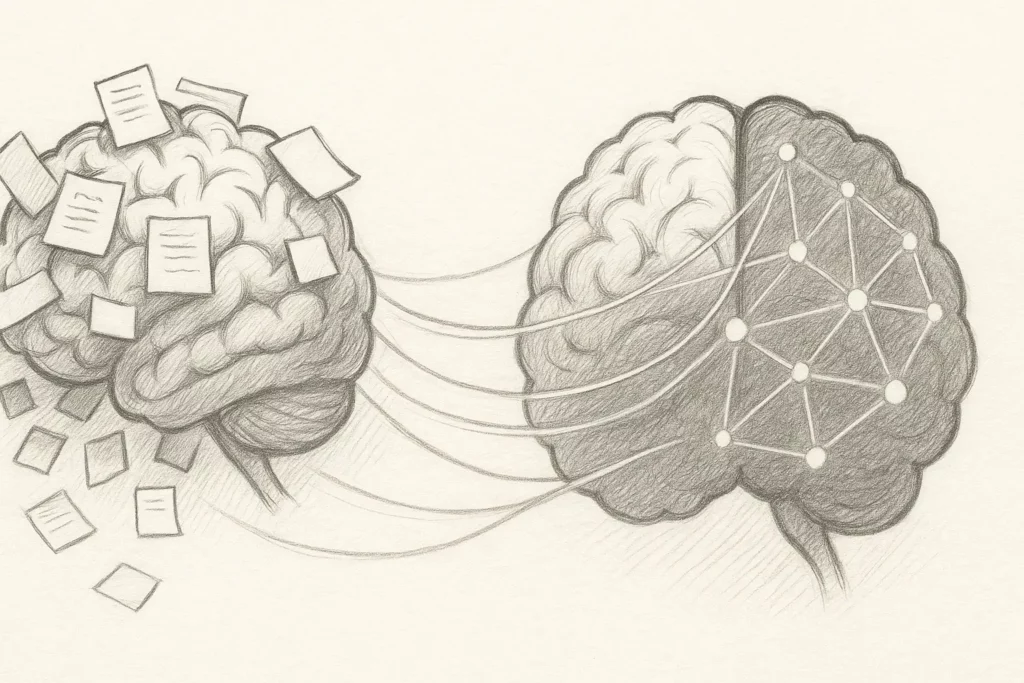
Every good system is built on bad versions of itself. My first second brain was a monster, colour-coded, over-tagged, and held together by caffeine and denial. I wanted control and ended up with clutter. Eventually, I realized complexity masquerades as productivity; it makes you feel busy instead of clear.
Another mistake was forgetting that this isn’t just storage. Dumping notes without connecting them turned my vault into digital dust. When I started linking and reflecting, it finally came alive.
Even now, I still revisit old notes and cringe at how messy they are. That’s the point. A living system changes with you. The goal is a system that you can actually maintain.
At first, I built a monster. Templates for every mood and tags so specific they confused even me. Then I realized complexity is a trap disguised as productivity. The simpler your system, the longer it survives.
A second brain isn’t just storage. It’s a thinking partner. I used to dump notes without connecting them. Over time, I learned to link ideas and reflect on them. That’s when it started to feel alive, like a genuine extension of my mind.
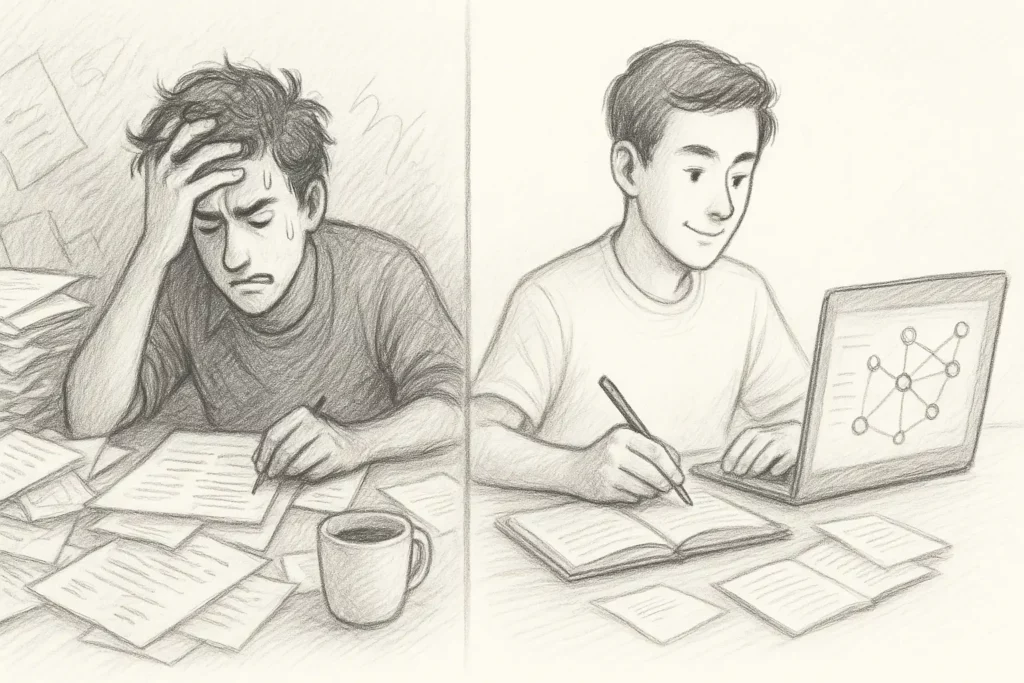
Building a second brain changed how I study and live. These are the most noticeable improvements, from focus and calm to the way I retain and connect information.
My digital brain acts like noise-cancelling headphones for my thoughts. Everything I need is one search away. No more digging through PDFs or screenshots. The result: mental space and smoother studying sessions.
Externalising information reduces stress. When your thoughts have a home, your brain doesn’t have to hold them all. This clarity spills over into daily life too. I think better, write better, and panic less.
By connecting ideas, summarizing actively, and reviewing regularly, I remember more with less effort. My system supports both mental health and academic performance. Structured reflection is powerful because it strengthens both memory and mood. If you’re curious about the connection, I wrote a separate post about how to improve mental health.
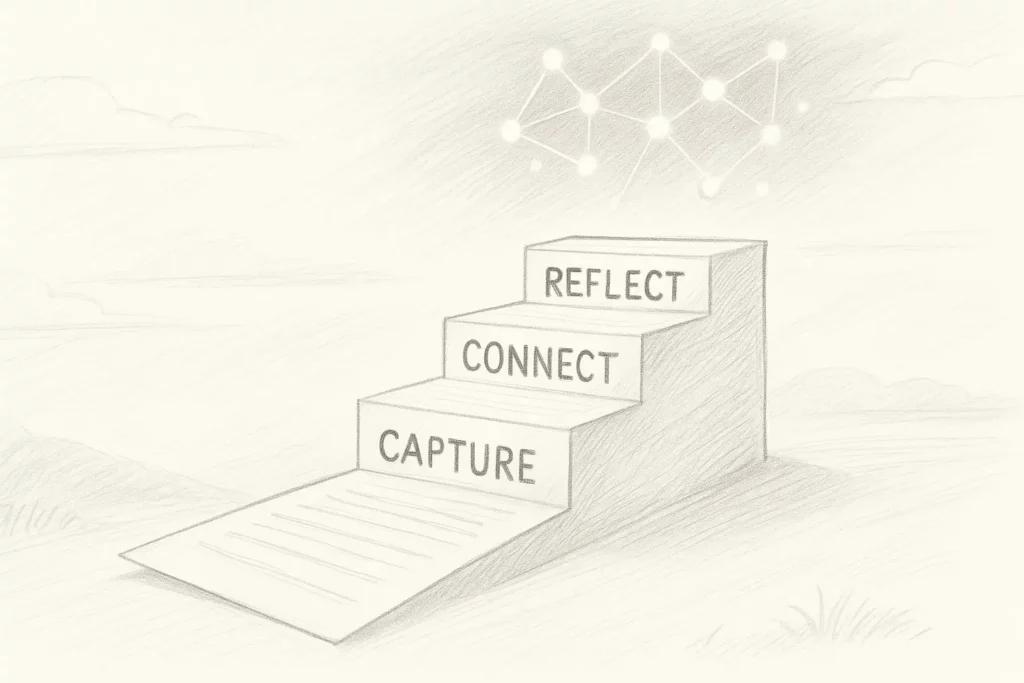
Building a second brain can feel intimidating at first, but it doesn’t have to be complicated. Start simple, stay curious, and let your system grow naturally as your needs evolve.
You don’t need a full system on day one. Start with one folder, one note, one idea. Let it grow naturally. Every small addition compounds over time.
Before you download every productivity app on the planet, look at what’s already in your pocket. Your phone’s notes app, email drafts, or even paper journals can serve as your starting point. Consistency beats fancy software.
Build for your current life, not your imaginary perfect self. If you’re studying, focus on capturing and summarizing course material. Later, you can expand into projects, journaling, or creative writing. Systems evolve as you do.
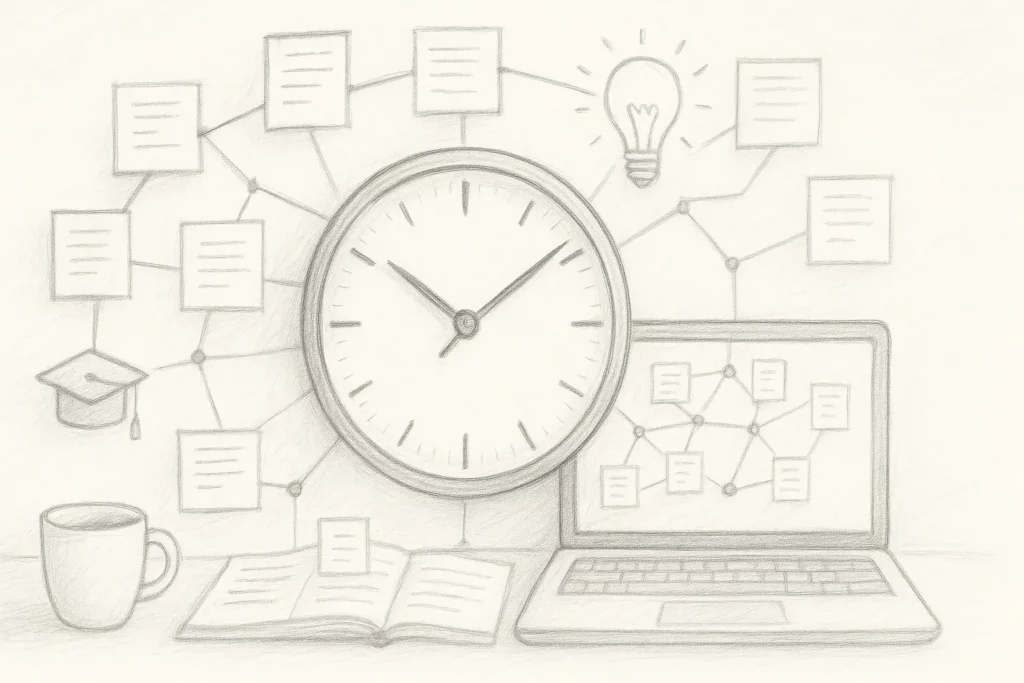
Once a week, I sit down with coffee and review my notes. I clean up my inbox, link related ideas, and write a short reflection about what I’ve learned that week. This weekly review isn’t a chore, it’s a mental reset that keeps your second brain for studying alive and relevant. This ritual keeps my study system digital notes clean, relevant, and alive. It’s also when I notice patterns. Which topics excite me? Which ones drain me? That awareness helps me adjust my learning goals and balance my energy.
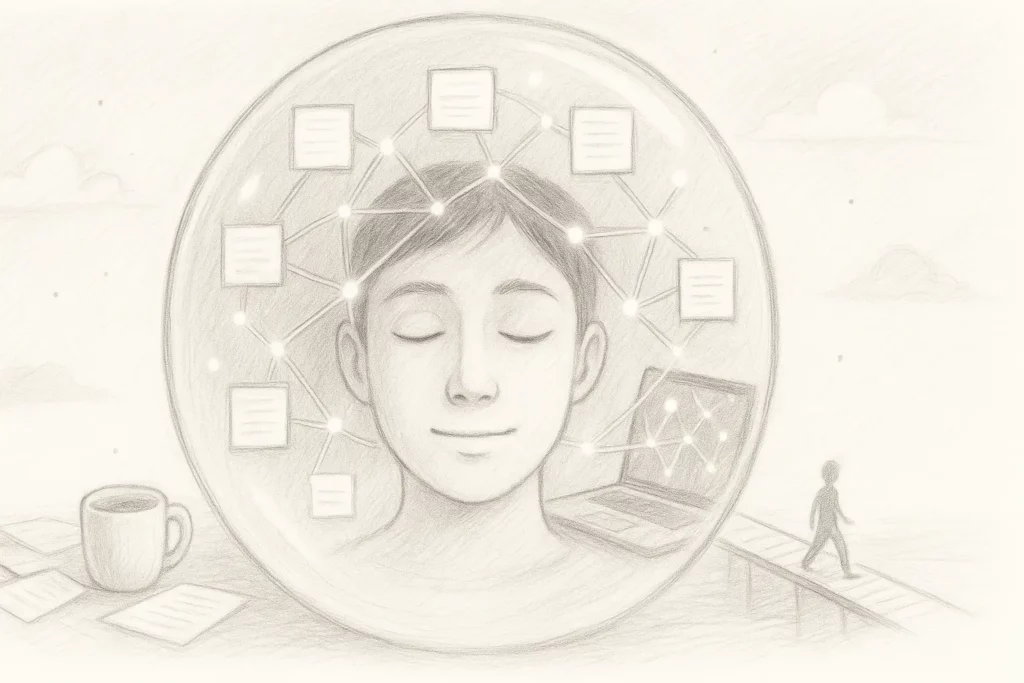
A second brain isn’t about productivity. It’s about peace. It turns scattered thoughts into connected knowledge and chaos into clarity. When your mind can trust its external memory, you think more freely. That’s what I built, not a digital filing system, but a mind I can trust.

I’m a mental health nurse, part-time student, and full-time overthinker fueled by coffee and music. This blog began somewhere between a night shift and a creative crisis. It's a small space for thoughts about life, learning, and everything in between.